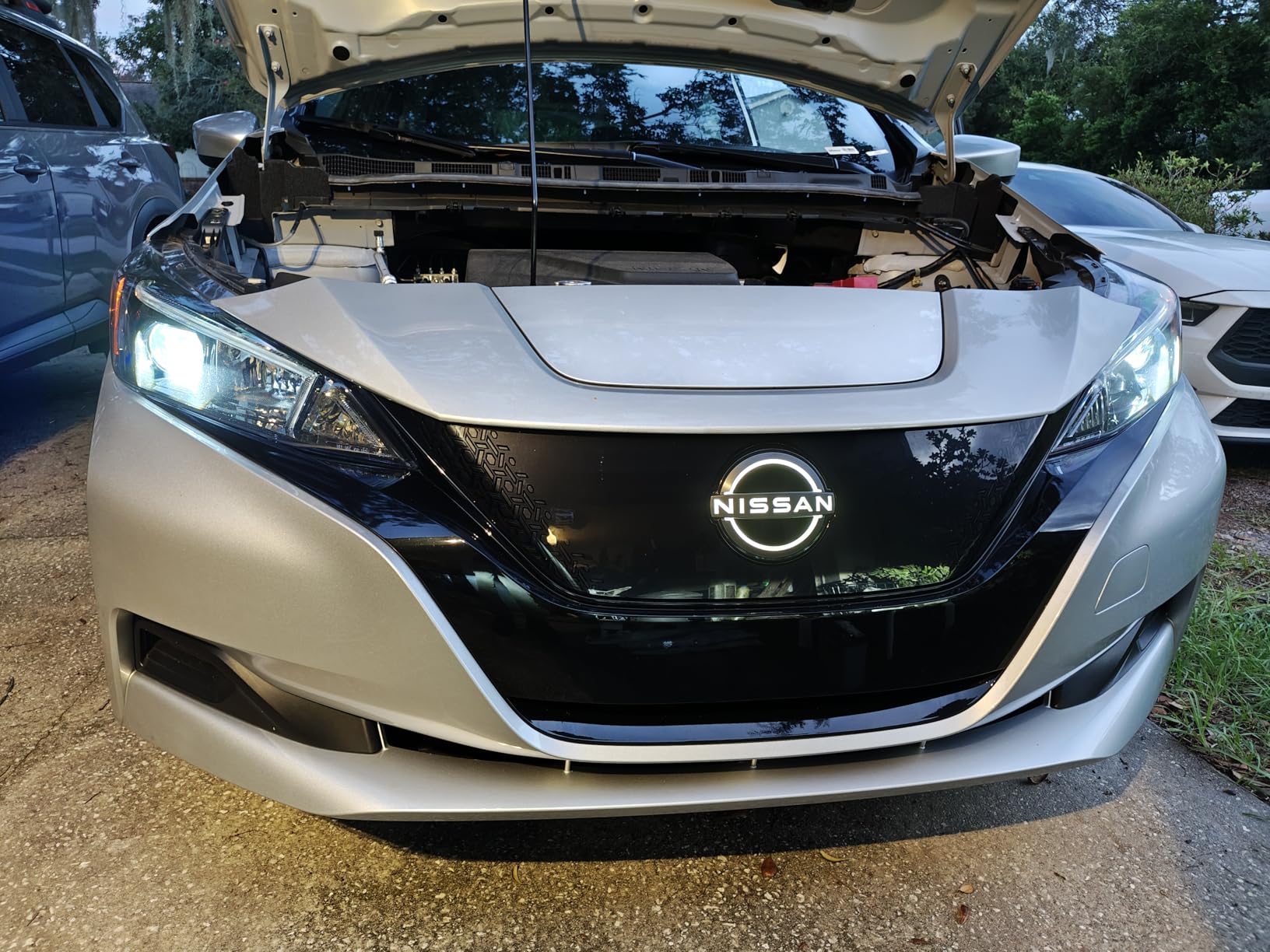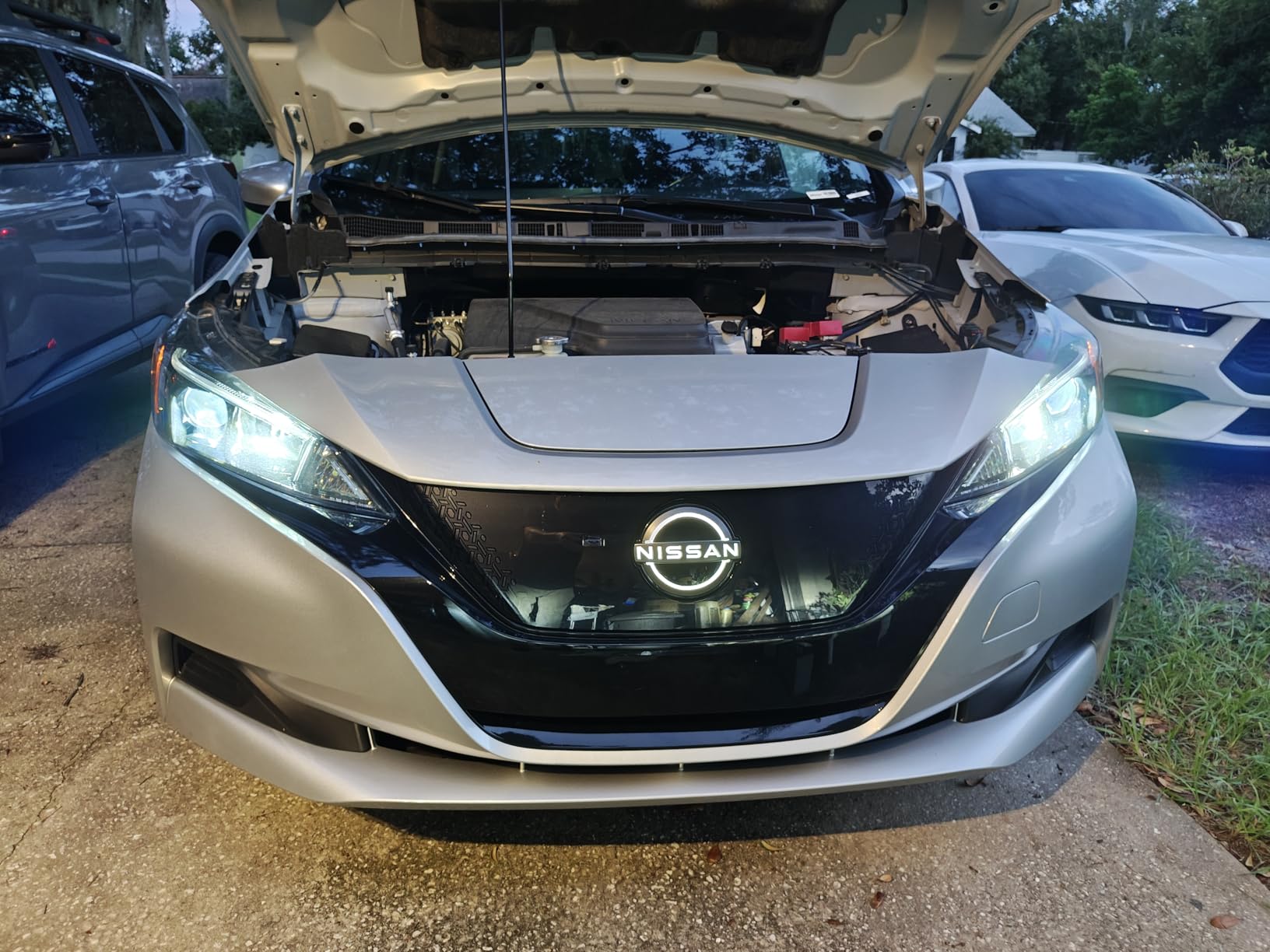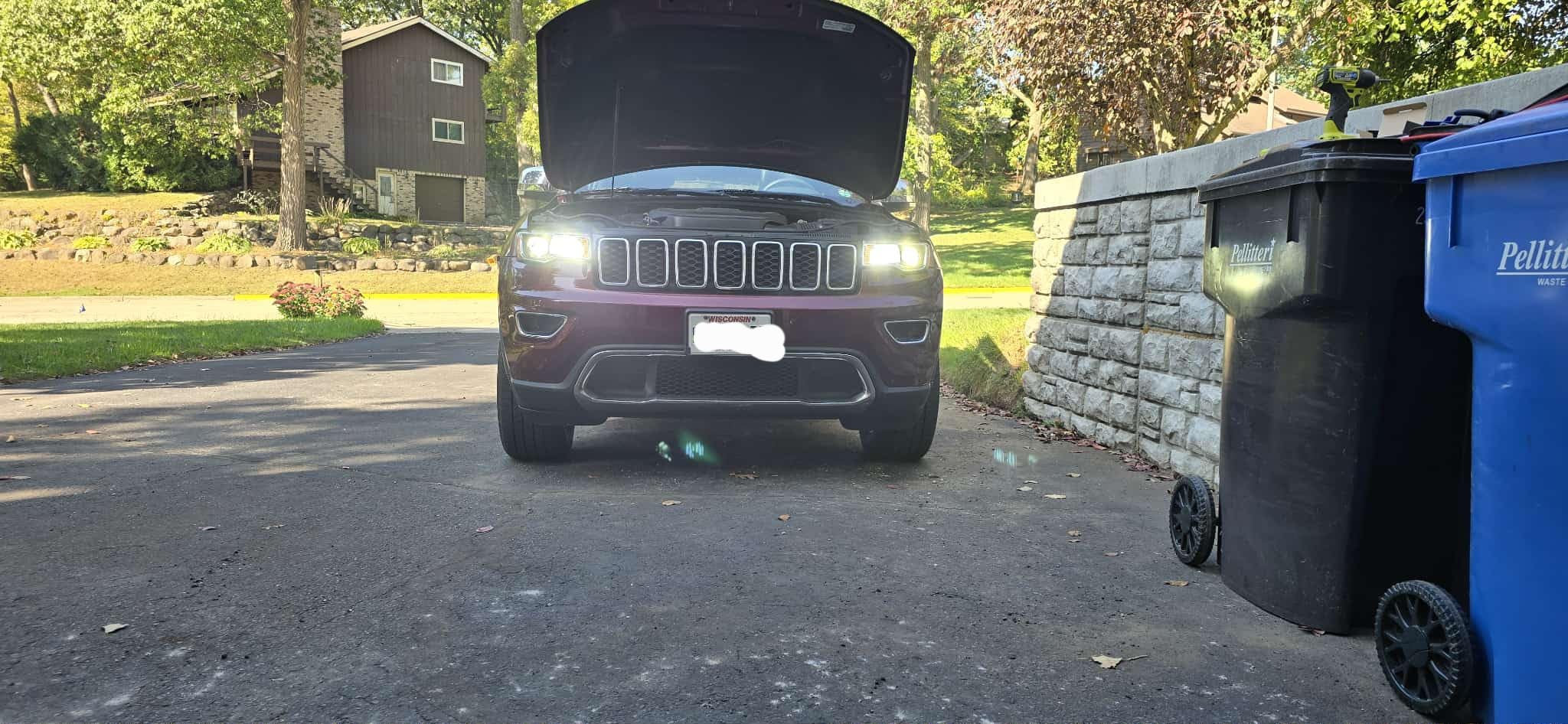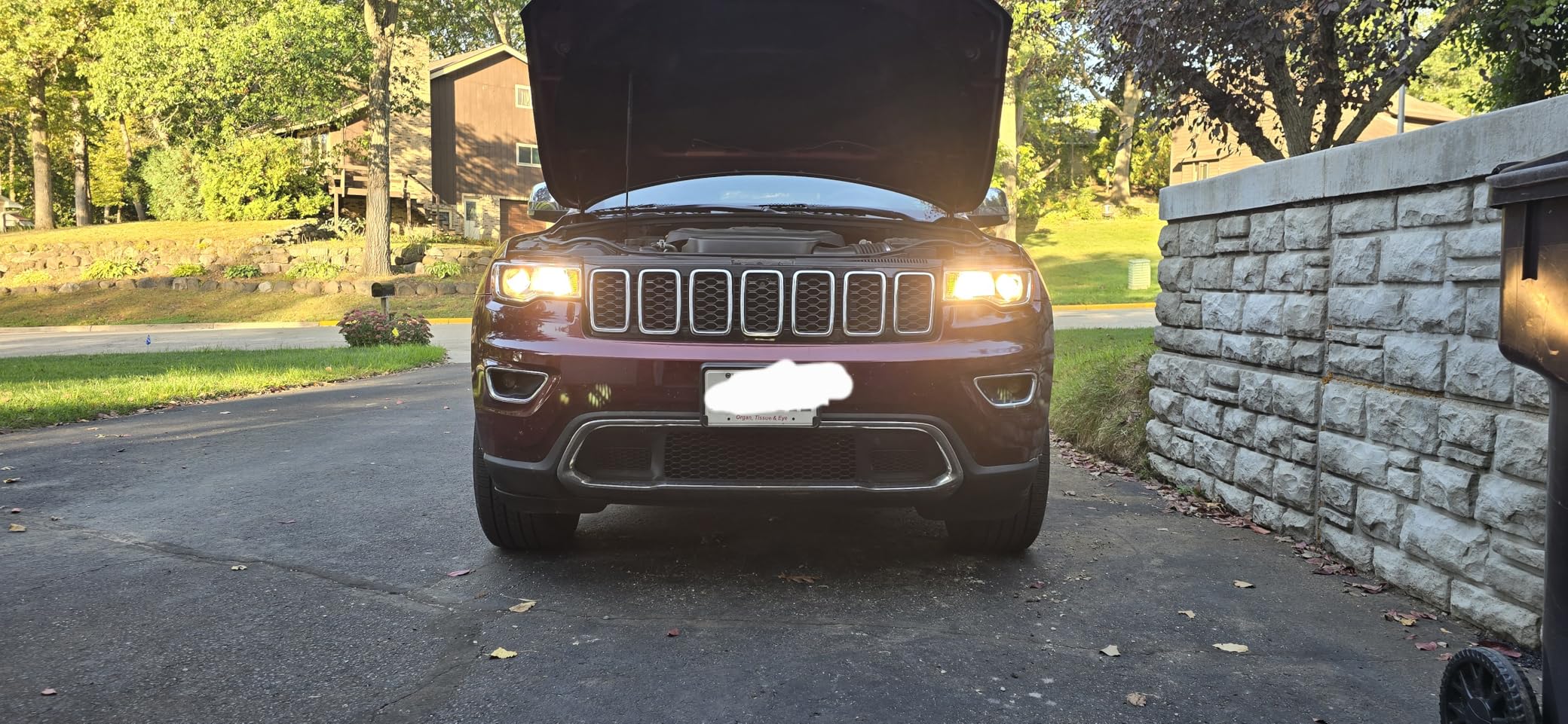LED headlights offer major improvements over old-fashioned halogen bulbs, lasting longer and using less power. The color of light these headlights produce—measured in Kelvins—ranges from warm yellow to cool blue-white and makes a big difference in how well you can see at night. This color affects both your safety on dark roads and how your car looks to others. Picking the right color temperature means finding what works best for your driving conditions while also matching your personal style preferences.
What is Color Temperature?
Color temperature is a reading that specifies the color of light emitted by an illumination source, like LED headlights. It is expressed in Kelvin (K) on a scale typically ranging between 1,000K and 10,000K.
The Kelvin temperature tells us if the light is more yellow/orange (lower temperatures) or more blue/white (higher temperatures). For LED headlights specifically, this measurement helps drivers understand the character of light their car will project onto the road.
Low down on the scale, from 2700K-3000K, the light is warm with a yellow or amber hue, similar to old halogen bulbs. When the temperature increases up to 4000K-5000K, the light is whiter, similar to daylight. Where the temperature is even higher, at 6000K and above, the light is cool blue-white.
While the color temperature doesn't measure the actual warmth of the light source, the name comes from the way heated metal changes color as it heats up—starting with red/orange at low temperatures and progressing towards blue as it gets hotter. This scientific principle explains why we're seeing different colors of light as "warm" or "cool".
Kelvin Scale Explained
Kelvin scale is the standardized method to measure and qualify the color of light emitted through LED headlights. So named in honor of physicist Lord Kelvin, the scale runs between approximately 1000K to 12000K in automobile lighting applications.
Lower down on the spectrum (2700K-3500K), headlamps project a warm yellowish or amber light, which is similar to standard halogen bulbs. Such a warmer light is effective during fog or rainy weather as it creates less reflection and glare.
The middle range (4000K-5000K) yields a brilliant white light closely approximating daylight. This range provides superior visibility and is widely thought to be the ideal compromise for most driving. The majority of luxury vehicles come equipped with LED headlights in this color temperature range.
Increasing higher along the scale (6000K-8000K), headlight bulbs yield a bluish-white cool light that presents an elevated, otherworldly appearance. Beyond 8000K, the light gradually appears blue to purplish, and this does not necessarily have an unusual effect, but it tends to supply less actual on-road light.
It should be noted that while higher Kelvin ratings might appear "brighter" to the human vision due to their blue color, this does not necessarily translate into better lighting of the road ahead. Perceived brightness differs from actual light output, which is independently quantified in lumens.

How Headlights Color Temperature Affects Visibility and Safety
Yellow Lights (3000K-4300K) Work Best In Fog And Rain
Color temperatures that differ respond under conditions that also differ. Headlights in lower color temperatures (3000K-4300K) and their yellow hue cut through snow, rain, and fog more since they are less reflective and generate less glare. They perform in bad conditions when the visibility itself is poor.
White Lights (4000K-5000K) Help You Stay Alert Without Eye Strain
The color temperature of headlights directly impacts driver comfort and fatigue. White lights in the 4000K-5000K range closely resemble daylight, which keeps individuals awake and does not lead to eye strain when driving during the night for extended periods. It is particularly required for long-distance drivers who need extended visual comfort without restricting visibility.
Blue Headlights (above 6000K) Can Blind Other Drivers
Color temperature in a headlamp affects not only the driver's visibility but also the other occupants of the road. High color temperatures of over 6000K can generate objectionable glare for oncoming traffic, causing momentary loss of vision and resulting in accidents. Selecting appropriate color temperatures ensures overall road safety.
How Headlight Colors Change Your Car's Look
Blue-White Lights Give Cars A Modern, High-Tech Look
Many drivers appreciate the current appearance of higher color temperature headlights (5500K-6500K). The bluish or cool white lights give a high-tech, luxury look that is well-suited to modern car styling. This aesthetic appeal has become extremely trendy among car owners who wish to give their cars a more modern look.
Yellow-White Lights Create A Classic, Luxury Feel
Lower color temperatures (2700K-4300K) produce a classic, warm appearance, much like older halogen headlights. This warmer light gives a softer, less muted appearance that most drivers prefer, especially for older or high-end cars where a softer lighting appearance enhances the design overall.
Color temperatures for headlights can be selected in harmony with the color of and design elements in an automobile. For example, automobiles featuring chrome trimmings or cold-colored paint would predominantly be a match for higher Kelvin headlights, but automobiles that have warm-painted schemes or older-model models might appear better and feel more cohesive using lower Kelvin settings. This consistency maximizes the overall aesthetic impact.

How Color Temperature Affects LED Performance?
The color temperature of LED headlights greatly determines how well they operate, from energy usage and brightness to performance in different driving environments. In units of Kelvin (K), color temperature determines whether light is warm (yellow) or cool (bluish-white). Both extremes have their pros and cons for car headlight usage.
Comparing Warm and Cool Colors for Headlights
| Feature | Warm Colors (2700K-4300K) | Cool Colors (5000K-6500K) |
| Energy Use | More efficient, uses less power | Less efficient, uses more power |
| Brightness | Lower lumens, appears less bright | Higher lumens, looks brighter |
| Weather Performance | Works better in fog, rain, snow | Works better in clear weather |
| Eye Comfort | Easier on eyes, less tiring | Can strain eyes during long drives |
| Lifespan | Usually lasts longer due to less heat | May wear out faster due to more heat |
| Seeing Distance | Shorter range but clearer view | Longer range in good weather |
| Glare | Creates less glare for other drivers | Can bother oncoming traffic more |
| How Colors Look | Objects look more natural | Creates sharper contrast but less natural colors |
When choosing between warm and cool LED headlights, think about where and when you drive the most. Warm colors are better than cool colors in rain or fog, cutting through bad weather without using more power. Cool colors enable you to see more distance than warm colors on clear nights, so they are better suited for country roads with less light. The best choice between warm and cool LED headlights is determined by your usual driving conditions, the importance of power saving, and what you feel comfortable with in terms of eyesight. Middle-range choices (4000K-5000K) are most favored by drivers because they offer an ideal combination of benefits from warm and cool light.
Choosing the Right Color Temperature for Your Vehicle
Selecting the proper headlight color temperature is essential for both optimal visibility and legal compliance. The following tables provide guidance based on your specific driving conditions and legal considerations.
Finding the Sweet Spot Between What You Like and What Works Best
Choosing the right headlight color temperature isn't just about looks—it's about finding what works best for your specific vehicle, driving conditions, and personal comfort, whether you're navigating foggy roads or cruising on dark highways.
| Driving Scenario | Recommended Color Temperature | Benefits |
| Everyday driving | 5000K-6000K | Bright white light without excessive blue tint |
| Fog, rain, or snow | 3000K-4300K | Better penetration through moisture with reduced glare |
| Highway or rural areas with limited lighting | 5000K-6000K | Enhanced visibility at greater distances on dark roads |
| Trucks or SUVs with higher-mounted headlights | 4000K-5000K | Reduced glare for oncoming traffic |
| Sports cars or vehicles with lower headlight placement | 5000K-6000K | Improved visibility without causing excessive glare |
| Drivers experiencing night vision fatigue | 3000K-4500K | Easier on the eyes during extended night driving |
| Upgrading from halogen to LED | 4300K-5000K | Noticeable improvement without dramatic color change |
By matching your headlight color temperature to your typical driving environment—whether that's city streets, foggy conditions, or rural highways—and considering your vehicle type, you'll achieve the best visibility while reducing eye strain during those long night drives.
Staying on the Right Side of the Law with Your Headlights
Knowing which headlight color temperatures are legal in your area can save you from tickets while ensuring your lights meet safety standards, especially when considering aftermarket upgrades or driving across different jurisdictions.
| Legal Consideration | Recommended Approach | Reasoning |
| Meeting most state legal requirements | 4300K-5500K | Appears white without excessive blue tint |
| Avoiding unwanted police attention | Stay below 6500K | Higher temperatures appear too blue and may violate regulations |
| Installing aftermarket LED headlights | Ensure proper aiming and focusing | Prevents illegal glare regardless of color temperature |
| Driving in states with strict regulations | 4300K-5000K | Matches factory headlight colors and rarely causes legal issues |
| Traveling across multiple jurisdictions | 4300K-5500K | Widely accepted in most areas |
| Off-road driving | More flexibility in color temperature | Remember to switch to road-legal lights on public roads |
| Uncertain about local laws | Consult DMV or local law enforcement | Get accurate information before investing in new headlights |
Sticking with moderate color temperatures between 4300K-5500K will help you avoid unwanted attention from law enforcement and keep your vehicle street-legal, while still allowing you to upgrade from factory headlights for improved visibility and style.
Choose Your Perfect Headlight Color Today
When picking headlights for your vehicle, you need to balance what looks good, what helps you see better, and what's legal. Most drivers do best with lights in the 4300K-5500K range—white enough to see clearly but not so blue that you'll get pulled over. Think about where you drive most: foggy areas need warmer lights, dark country roads benefit from cooler ones. Your vehicle matters too—trucks need different lighting than sports cars because of how high the headlights sit. Before buying, check your local laws to make sure your new lights are street-legal, especially if you're upgrading to LEDs. With the right color temperature, you'll drive more safely at night while keeping your vehicle looking good and staying on the right side of the law.
FAQs About Color Temperature and LED Headlights
Q1: What is the color temperature in headlighting, anyway?
Color temperature is a measure of the color of light coming from your headlights, in Kelvins (K). Lower values (3000K-4000K) yield warm yellow light and higher values (6000K+) yield cooler blue-white light.
Q2: Will altering the color temperature of my headlight make me more visible?
Yes. Warmer color temperatures (3000K-4300K) cut through rain and fog more readily, and colder temperatures (5000K-6000K) provide higher contrast on clear nights and enable you to see farther on dark highways.
Q3: Are blue headlights illegal?
Blue-appearing headlights (usually over 6500K) are forbidden in most states. For legal street use, stay between 4300K-5500K, which appears white without excessive blue color.
Q4: What's the best color temperature for day-to-day driving?
For the typical driver, 5000K-6000K is the optimal balance between visibility and legality, giving bright white light that works well in most situations without creating too much glare.
Q5: Do LED headlights with the same color temperature as halogens have the same appearance?
No. Even at the same color temperature, LEDs will typically be brighter and more focused than halogens. A 4300K LED will look sharper and whiter than a 4300K halogen.
Q6: Are warmer or cooler headlights appropriate for night driving fatigue?
Warm color temperatures (3000K-4500K) are usually more comfortable to drive with at night and can help avoid eye strain and fatigue.
Q7: Can I use multiple color temperatures for different weather conditions?
While ideal, it is not possible to swap headlights for varying conditions. Choose a color temperature that works best under your most common driving conditions, typically 4300K-5500K for general driving.
Q8: Are brighter headlights higher in color temperatures?
No. Brightness (in lumens) is not related to color temperature. A 3000K headlight can be as bright as a 6000K headlight—they just emit different colored light.





1 comment
i operate a John Deere 650j forestry bull dozer. It came with 220 lumen warm 3000k warmwhite halogen bulb it has since been upgraded to 550 lumen led 5000k cool white led bulbs and they provide more light but seem to have issues in smoke and was wondering if the warmer 3000k light might be a better solution